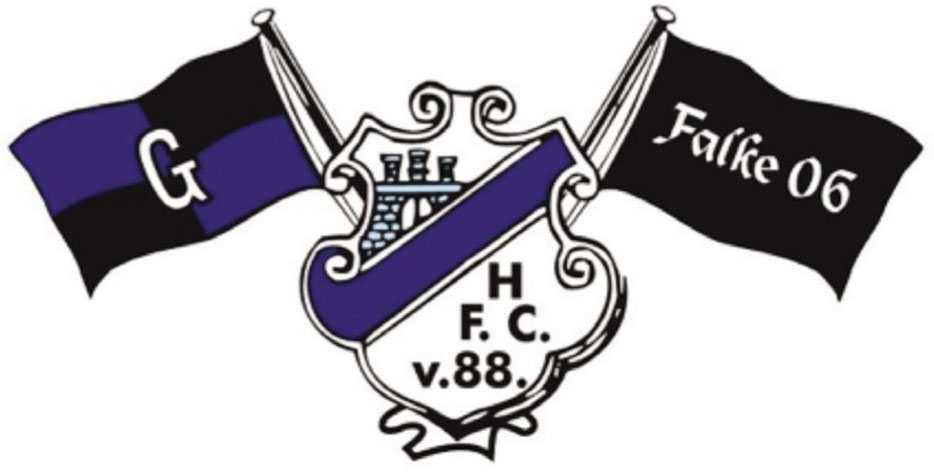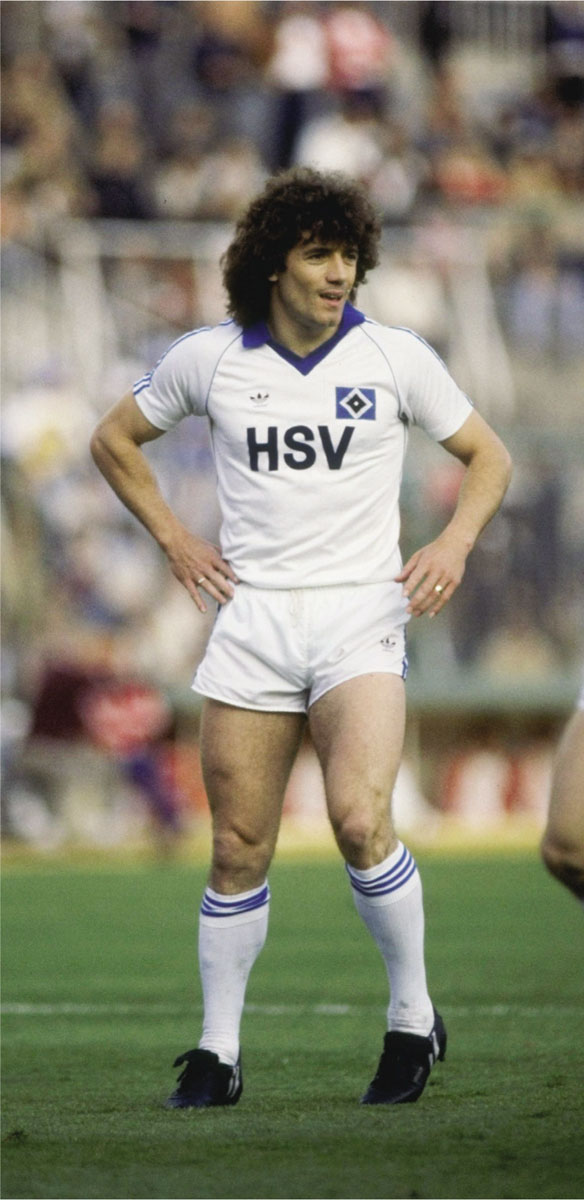
HAMBURG
THE SQUARES
Der Dinosaurier (the dinosaur) of the Bundesliga, Hamburger SV certainly lives up to its nickname. Until its relegation at the end of the 2017/18 season, HSV was the only club to have played every season in Germany’s top flight since its founding in 1963. The club, formed in 1919 with the merger of three clubs, is also one of the most successful in the country with six league titles, three cup victories and a win in the European Cup – a trophy cabinet that means Hamburg can claim to be one of Europe’s greatest clubs. During HSV’s golden age, between 1976 and 1983, world stars like Kevin Keegan and Franz Beckenbauer graced the team.
The club crest in its various forms over the past 99 years has always been a visual representation reflecting the club’s history and its host city of Hamburg. The first, following a merger of SC Germania, Hamburger FC and FC Falke Eppendorf, was a combination of the three clubs that became Hamburger SV. Quickly the old heraldic style was scrapped for a modern style of a black diamond inside a white diamond – the colours of SC Germania. The white diamond represented the marine Blue Peter flag, an homage to the port city of Hamburg.
1978 saw the crest modified slightly but still favouring the diamond motif, which means that Der Dino was the club in the Bundesliga whose crest has remained the most intact since the league’s start in 1963.
Following relegation, it remains to be seen if the club can make a swift return to the top flight and recapture its glory days.
CLUB: Hamburger Sport-Verein
NICKNAMES: Die Rothosen (the Red Shorts) and Der Dino (the Dinosaur)
FOUNDED: 1887
STADIUM: Volksparkstadion, Hamburg (57,000 capacity)
HISTORIC PLAYERS: Uwe Seeler, Felix Magath, Kevin Keegan, Sergej Barbarez and Rafael van der Vaart

Hamburger SV was founded in 1919 through a merger of SC Germania, Hamburger FC and FC Falke Eppendorf. HSV has adopted 1887, the year of SC Germania’s founding, as its own. The first crest was a combination of the three merged clubs, a badge that did not last very long.

1919–1978. This emblem was introduced during the club’s early days, and in time it became one of the most recognisable in the world. Although the club play in red and white, which are the colours of the city of Hamburg, they chose the white and black of SC Germania for the crest. In reference to Hamburg’s seafaring traditions, the white diamond is inspired by the Blue Peter flag which means, ‘All persons should report on board, as the vessel is about to proceed to sea.’

1978–present. At the end of the 1970s, Hamburg’s emblem was modified, the dimensions and colours changed. Apart from these modifications, not much has been altered since 1919.

Kevin Keegan in 1978 showing off the simple yet striking Hamburg club crest, a design that pays tribute to the city’s rich nautical heritage.